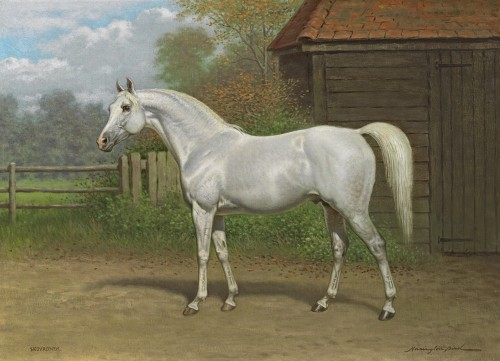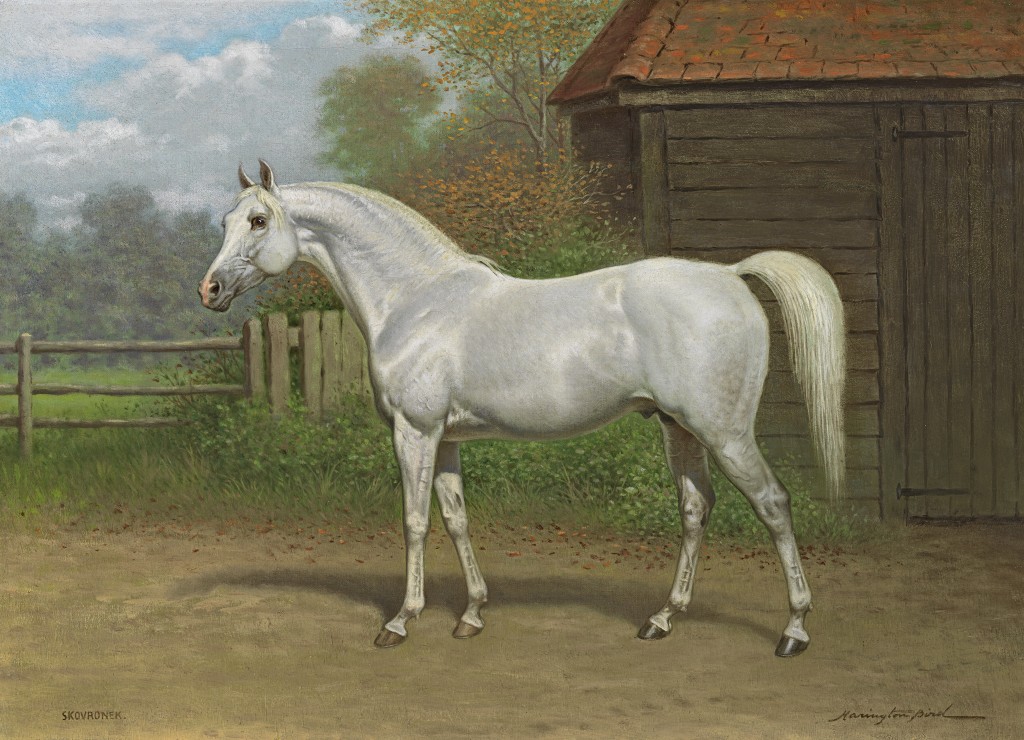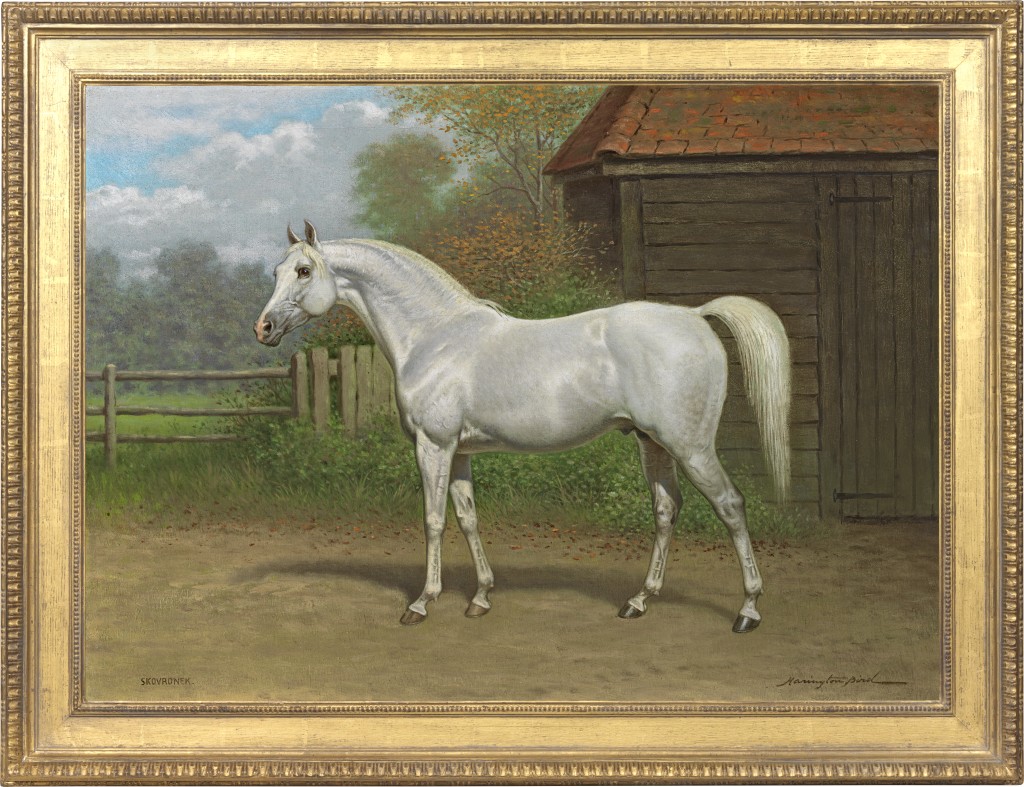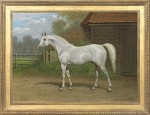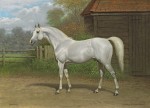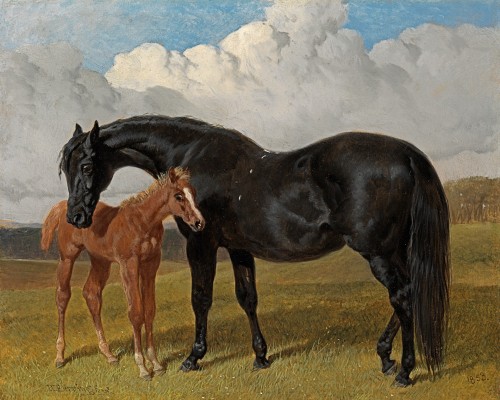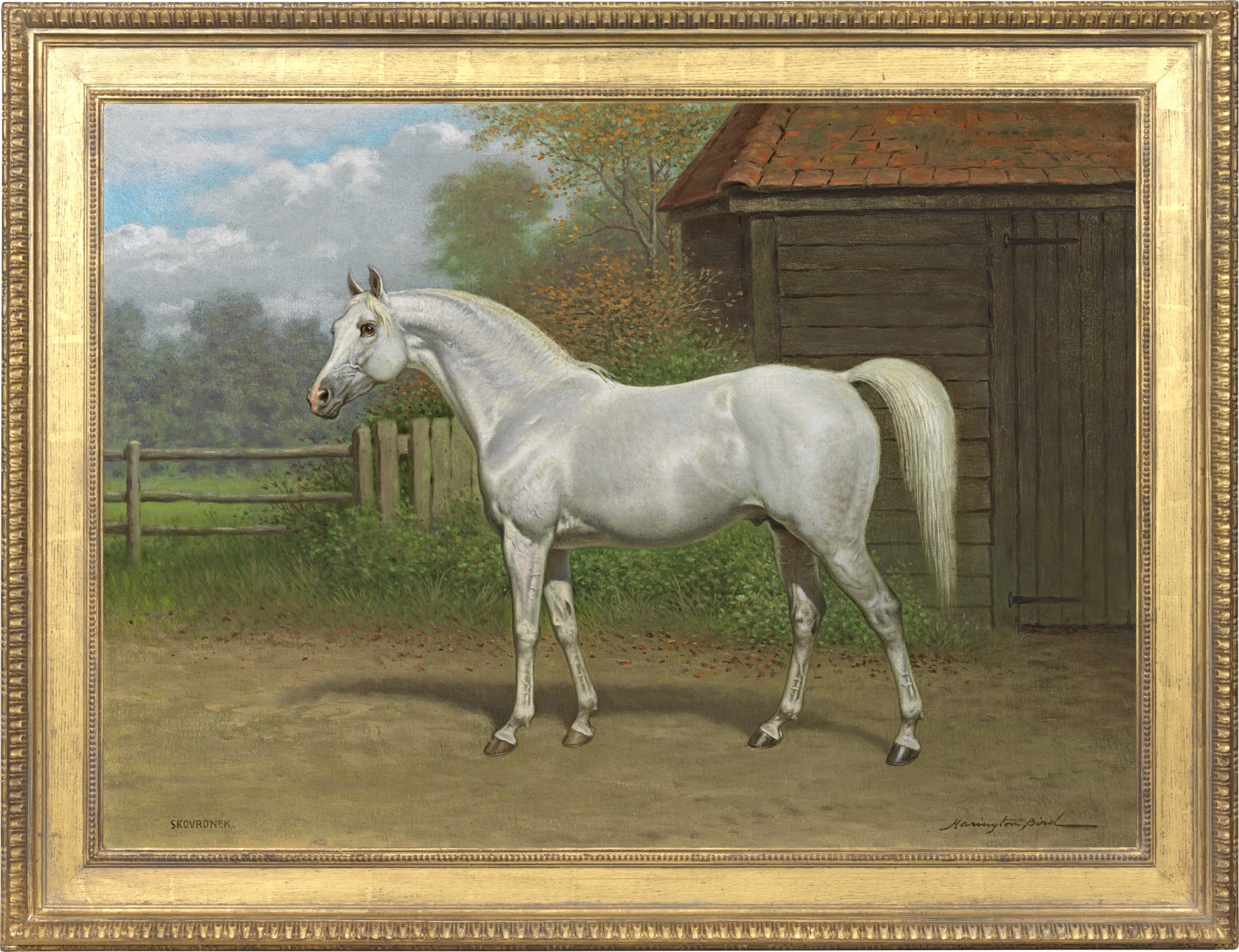JOHN ALEXANDER HARRINGTON BIRD
1846 - London - 1936
Ref: CC 180
Portrait of the grey Arabian stallion Skowronek
Signed lower right: Harrington Bird;
inscribed lower left: Skowronek.
Oil on canvas: 21 ¼ x 29 ½ in / 54 x 74.9 cm
Frame size:
Painted circa 1915
Provenance:
Commissioned by Henry Vyvyan Musgrave Clark, Court House Farm Stud, near Lewes, East Sussex;
by descent in a private collection, UK
Skowronek (‘skylark’ in Polish) was a celebrated Arabian stallion which contributed greatly to the success of Lady Wentworth’s Crabbet Park Stud. Foaled in 1908, he was bred by Count Józef Potocki (1862-1922) on his Antoniny estate in Ukraine. The fabled Antoniny Stud had been built up by Prince Roman Sanguszko and inherited by his daughter, Princess Maria Sanguszko, Count Józef’s mother. In 1908 the stud was experiencing its last glorious decade, before its brutal destruction in the Russian Revolution.
Skowronek’s sire was Ibrahim, a desert-bred Arabian, said to have been born near Damascus and imported to the West via Istanbul and Odessa[1]. His dam was Jaskoulka (‘Swallow’), a Polish-bred, pure Arabian. Skowronek was later described as ‘small in stature, harmoniously built with fine, expressive head and swanlike neck’. He caught the eye of the American marksman, sculptor and horse breeder Walter Winans (1852-1920), who was shooting on Potocki’s estate. Winans bought Skowronek for £150 and imported him to England around 1913. He used him as a model for several bronzes before selling him to Mr Webb-Wares, who used him as a hack. Skowronek was next owned by Henry Musgrave Clark of Court House Farm Stud near Lewes, East Sussex, who commissioned this painting from Harrington Bird. Clark realised Skowronek’s potential, showing him and using him at stud.
Skowronek was bought from Clark by Lady Wentworth (1873-1957) of the Crabbet Arabian Stud in West Sussex, possibly using sleight of hand: Clark originally thought he was selling the horse to an American agent and was annoyed that he had gone to a rival English breeder. Judith Blunt-Lytton, 16th Baroness Wentworth in her own right, was one of the most influential breeders of Arabian horses in the first half of the twentieth century, as well as being a prolific author on the subject. It has been estimated that over ninety percent of Arabian horses in the world today derive from Crabbet bloodstock, particularly Skowronek’s. Lady Wentworth was a formidable character from a romantic background that almost trumped that of her favourite horse. She was the daughter of the poet and Arabist Wilfrid Scawen Blunt and his wife Lady Anne King, the granddaughter of Lord Byron. Blunt, a quixotic anti-colonialist, dabbled in Egyptian politics; Lady Anne was the first European woman to ride through the desert to the city of Ha’il, in today’s Saudi Arabia. All the family spoke Arabic. Judith spent much of her childhood in Egypt and other parts of the Middle East, where her parents travelled to purchase horses for their Crabbet Arabian Stud and their Sheykh Obeyd Stud in Cairo. She was thus, for a European, unusually steeped in the culture of the lands from which the Arabian breed derived.
Following a complex and difficult inheritance, Lady Wentworth rebuilt the Crabbet Stud and ran it successfully until her death in 1957. Skowronek was one of her foundation stallions. He died in 1930, aged twenty-two. His celebrated offspring included Raffles, bought by the American breeder Roger Selby, and the stallions Raswan and Raseyn, exported to the WK Kellogg Arabian Stud in the United States. His son Naseem was sold to the Tersk Stud in the Soviet Union; it is said that Lady Wentworth turned down an offer of $250,000 from Tersk for Skowronek himself. The Duke of Veragua took four of Skowronek’s daughters for his stud in Spain.
Lady Wentworth with Skowronek.
JOHN ALEXANDER HARRINGTON BIRD
1846 – London – 1936
John Alexander Harington Bird was famous for his paintings of horses, particularly Arabians. He also painted racing and hunting scenes.
Educated in London and initially destined to follow a military career, Bird suddenly turned his interest to art and first studied at the Royal Academy Schools. In 1875 he went to Montreal, Canada, where he took the post of Director of Art on the Board of School Commissions. Bird exhibited at the Royal Canadian Academy and became an Associate member in 1880.
Bird returned to London in 1885, where he spent the rest of his life. During these years he exhibited at the Royal Academy and the Royal Society of British Artists, Suffolk Street. Several prints were published after his work, including The Queen’s Race Winners, a series of thirteen portraits of racehorses with jockeys up. Bird was also an accomplished illustrator.
[1] For the history of Skowronek, see the CMK Arabian Horses website. It includes a document from Count Jósef Potocki Jnr., dated 1919, stating that Ibrahim’s sire was Heijer and his dam Lafitte.

